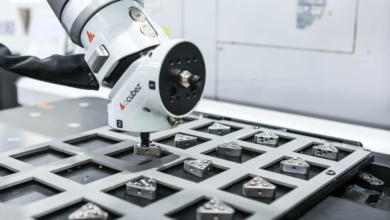Can Wearable Technology Lower Health Insurance Premiums?

Wearable technology has the potential to revolutionise the way health and lifestyle data is analysed. As more people begin using wearable devices, insurance companies are taking notice and using the data collected from these devices to track customers’ health. By having access to real-time data, insurance companies can more accurately assess a person’s health status instead of relying on potentially unreliable diagnostic centre records.
There are some insurance companies that have already embraced the digital route and have transitioned from a prediction-based policy to an evidence-based pricing model. For instance, insurers have launched apps that are linked with the insurer’s rewards program. Customers can earn reward points based on the amount of physical activity they engage in.
This article will walk you through the impact of wearables on health insurance premiums. But first, let’s discuss the different types of wearable technology.
What are the Types of Wearable Technology?
1. Fitness Trackers
Wristbands or straps fitted with sensors are used to monitor physical activity and vital signs such as heart rate and blood pressure. These devices are basic but can be synced wirelessly with smartphone apps for convenient storage and data processing.
2. Smartwatches
In addition to step tracking, smartwatches are now being used to monitor health and fitness. For example, smartwatches for people with Parkinson’s disease can track symptoms and transmit data to create personalised treatment plans. In 2017, Apple launched the Apple Heart Study app to monitor heart rhythms and detect atrial fibrillation.
3. ECG Monitors
These devices continuously track heart rate or pulse and send readings to doctors. They can also detect atrial fibrillation. Although the data from these monitors are accurate, it is important not to rely on them entirely, as licensed medical devices are more precise.
4. Smart Clothing and Sensors
Smart clothing has built-in technology that collects biometric and physical data, such as heart rate and body temperature, via sensors. The data is transmitted to a connected device, such as a smartphone, which the wearer can easily access.
5. Continuous Glucose Monitoring Device
Continuous glucose monitoring devices help monitor and manage Type 1 or Type 2 diabetes. A sensor is fitted under the skin to continuously monitor blood sugar levels, with the results sent to a wearable or mobile device via a transmitter.
6. Sleep Trackers
This device is worn on the wrist or finger while sleeping and monitors heart rate, respiratory patterns, and other vital parameters. It records sleep data such as duration of sleep, the number of times you wake up at night, wake-up time, and the various stages of your sleep, such as light and deep sleep.
How Wearables Help Lower Health Insurance Premiums?
Wearables are beneficial for both the insurance industry and the customer.
Wearable devices track a variety of fitness parameters in real-time, including blood pressure, blood sugar levels, and heart rate, which can be used to determine a person’s risk factors and create a personalised health insurance premium rate.
Healthy individuals can enjoy a discount of 10-15% on their health insurance premiums. At the same time, insurers can use the data to create custom premium rates for each individual rather than relying on a one-size-fits-all predictive risk-assessment policy.
Read also: The Role of Technology in Simplifying the Insurance Claim Process
Wearable devices generate personal health data that can be shared directly with doctors and analysed to monitor patients remotely. This approach can help reduce the need for personal visits and alleviate the workload of healthcare professionals.
Wearable devices can help reduce healthcare costs by allowing users to manage their health, detect early signs of disease, and minimise the risks of illness. Additionally, if the user has a health plan, it can help reduce their out-of-pocket expenses.
Summing Up
As more people become health-conscious, the demand for wearable healthcare technology, such as fitness trackers and smartwatches, continues to grow. Apart from using wearable devices and leading a healthy lifestyle, it’s also crucial to protect yourself and your family by obtaining healthcare insurance coverage. Depending on your family size and budget, you can choose between family or individual health plans.
Having active healthcare insurance coverage acts as a safety net, providing financial protection during unexpected medical emergencies. Learn more about health insurance premiums with Niva Bupa, the best health insurance company.




